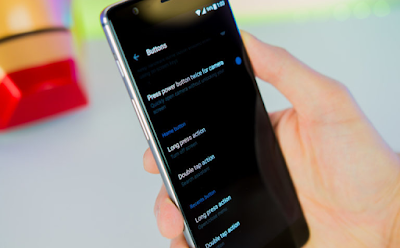Positives
- -Thin and light metal design
- -Beautiful 1080p panel
- DASH charging works as advertised
- Great all day battery life
- Performance is smooth and responsive
- Great all around rear camera
- Improved front facing camera
- Dual SIM
- Fast fingerprint sensor
- OxygenOS is more refined
Negatives
- No expandable storage
- Single bottom firing speaker
Design
It’s also not a very tall or wide phone and is only slightly larger than the Samsung Galaxy S7 Edge, allowing for a comfortable one-handed experience despite coming with a 5.5-inch display. There isn’t any 3T logo anywhere on the device that explicitly indicates that this is the upgraded flagship, and the only way to to really distinguish it from the older OnePlus 3 is by the color.
The OnePlus 3T is available in the same gold variant as the OnePlus 3, but the second color option is gunmetal instead of silver. The gunmetal version comes with both 64 and 128 GB options, while the gold iteration only comes with 64 GB of on-board storage.
Things remain unchanged on the display side, with the OnePlus 3T also coming with a 5.5-inch AMOLED display with a 1080p resolution. As is expected from an AMOLED screen, you get rich and vibrant colors with a lot of contrast, and the optional dark mode that is built-in to Oxygen OS
Brightness isn’t a concern and allows for comfortable outdoor visibility. Sharpness isn’t a problem either, and to the naked eye, the difference between this 1080p panel and other Quad HD screen won’t be noticeable, unless you are using the phone for VR. OnePlus feels that VR isn’t mainstream enough to justify the jump to Quad HD, and decided to stick to 1080p to aid with the battery life.
There aren’t a whole lot of differences between the OnePlus 3 and the 3T, but performance is one area that has seen an improvement. Under the hood, the OnePlus 3T comes with the new Qualcomm Snapdragon 821 processor, clocked at 2.35 GHz, which is faster than the one found in the Google Pixel smartphones. The 3T retains the 6 GB of RAM that is also available with the OnePlus 3.
With 6 GB of RAM, multitasking isn’t an issue either, and you can have a lot of apps in running the background and keep them for a very long time. The OnePlus 3T features one of the quickest and smoothest Android experiences out there. Granted, it may not be as smooth as the experience available with the Pixel devices, but it is certainly up there among the best.
As mentioned, 64 GB and 128 GB are the internal storage options available, but if storage is a concern, users will have to opt for the higher variant, with expandable storage via microSD card not being available. Getting the 128 GB model means that you will also get the new gunmetal color.
The fingerprint sensor that is integrated into the home button up front does unlock the device really quickly, but it is unfortunately not the most accurate scanner out there. It is fairly reliable, but there have been quite a few instances where it misreads my fingerprint. You can also add a variety of long press and double tap functions to the home button and the capacitive keys.
Another area where the OnePlus 3T has received an upgrade is in the battery department, with the device coming with a 3,400 mAh battery, which is a slight bump when compared to the 3,000 mAh unit available with the OnePlus 3. The 13% bump in battery capacity is more impressive when you consider the fact that OnePlus was able to achieve it without making the phone any heavier or thicker than its namesake.
OnePlus claims that you can get a full day of battery life after charging the device for just half an hour. In my experience, that translates to a charge to 60% in half an hour, which is certainly impressive, and very useful if you don’t have a lot of time to fully charge your phone.
The final area that has seen an upgrade from the OnePlus 3 is with the camera, but this change is more focused on the front-facing shooter, which is now a 16 MP unit, which is double the 8 MP sensor that was found with the OnePlus 3. The rear camera is the same 16 MP unit that was availabe with the OnePlus 3, and comes with a f/2.0 aperture, optical image stabilization, and phase detection autofocus.
The front-facing camera also comes with a f/2.0 aperture, which helps a lot when taking selfies in low-light conditions. With the bump in megapixel count, you will also have a lot more room to zoom and crop without any deterioration in the quality of the picture, and also enjoy sharper looking video. Overall, you get a far better experience with the front-facing shooter now than you did with the OnePlus 3.
The default camera app is pretty similar to the Google Camera, with many of the same modes to be found here, including Timelapse, Slow motion, and Panorama. The only exception is that manual controls are available if you are looking to dial in the setting yourself, but it is otherwise a very nicely laid out and easy to use camera application.
In terms of dynamic range, the camera does have a tendency to overexpose the shot and blow out a lot of the highlights, but HDR mode alleviates this problem easily. It does a great job of pulling extra detail from the highlights and shadows, while still maintaining the natural look of the original image. Low-light shots can be good, but onl when using the HQ mode. Without it, images are noisy and soft, and the mode allows for sharper, more detailed images that are a lot cleaner.










No comments:
Post a Comment